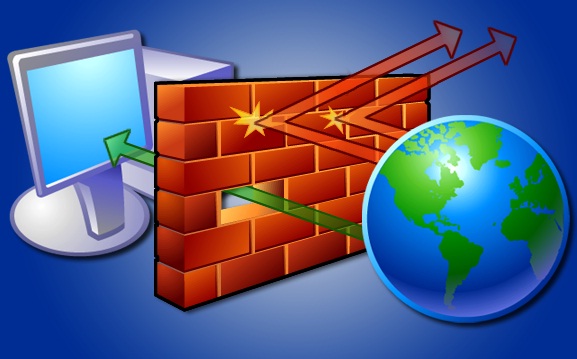There are many kinds of IT Security tools available today for both individuals and corporations. When so much of work is done through computers, it is necessary that people use these tools to prevent unauthorized access to sensitive, confidential data. If accessed by the wrong people, this data can be used in improper ways. This article will talk about one such important tool: the firewall.
Firewalls may be either software-based or hardware-based and enhance the security of a network greatly. The task of a firewall is to regulate incoming and outgoing traffic on the network. This is achieved by examining data packets that are being sent and received and seeing whether their passage ought to be allowed: only those data packets which conform to pre-determined rules are allowed to go through.

Firewalls today can recognize different applications and protocols (say, the File Transfer Protocol, FTP or the Hyper Text Transfer Protocol, HTTP) and can see whether they are trying to gain access to a port where they are not wanted. Firewalls can also detect when an application tries to abuse a protocol (this may happen if some malicious application has been installed on the system and is now trying to secretively send or receive information via some protocol).
Depending on your needs, you can get a firewall that is paid for and includes extra features. However, for individuals who want to use a firewall simply for protection when using the internet, free versions of popular firewalls will work just as well and give good results. It is good to read reviews of such programs before you install them: this is an easy task, as you will be able to find many of such reviews on the internet, written by knowledgeable computer enthusiasts.
Like it is the case with a lot of other IT security tools, you should not install two firewalls at the same time. This will result in conflicts and may end up doing more harm than providing the security that you wished for. Make sure you follow all installation instructions properly and read the accompanying files thoroughly, too.
After you install a firewall, you will notice a lot of messages from it! They will mostly be with regard to the processes and applications that are running and trying to change information on your system. You will see an increased number of messages when you are installing or uninstalling an application. Read through these messages properly when they occur at such times, and even more properly if they occur when you know that no applications should be trying to use any protocol.
If there are many users on the network, as is probably the case if you want to use a firewall for a business, make sure that it is only the system administrator who can effect changes to the rules of the firewall. Allowing all users of the network to have such privileges might put your network at risk from threats posed by people who are not part of the network but can bypass the firewall to gain access to it.
The IT security of an organization is one of the most important components of its development and improvement. It is something that should not be neglect easily.

